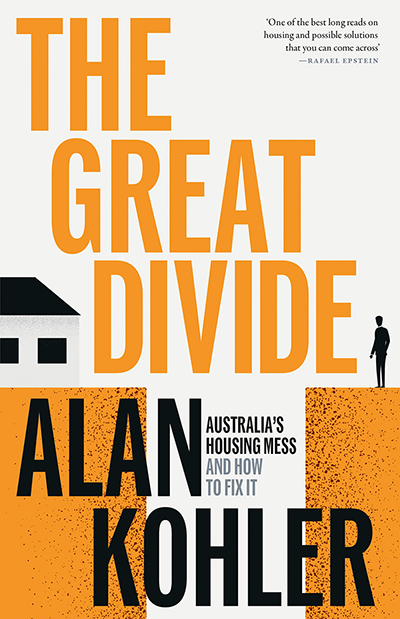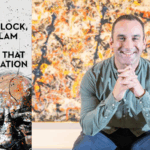Review: The Great Divide: Australia’s Housing Mess and How to Fix It, Alan Kohler, Black Inc.
It’s big news that we are in a housing crisis, where demand is outstripping supply, prices have risen higher than wages and inequality is growing, between wealthy (older) Australians and renters and aspiring buyers. In this book, ABC finance presenter Alan Kohler, with his usual clarity and twinkle in the eye, explains the problems (and possible solutions). It turns out John Howard is largely to blame.
In the Coalition-dominated years after WWII, public housing was not a priority – it was more of a niche pursuit to help the very poor. The federal government left planning to state governments who were short-sighted and couldn’t argue against everyone wanting their own quarter-acre block. What emerged were car-centric, hub-and-spoke cities. It’s ironic, says Kohler, that in Australia, one of the most sparsely populated nations, we have a housing shortage, but most are crammed in where the jobs are.

Since 2000, median house prices have gone from three times the average household income to eight times. (The gap is wider if you go back further.) This is because we have gone from thinking of a house as a home to thinking of it as an investment. In the last ten years many house prices have doubled, so it is indeed a good investment – if you have been able to get into the market.
Baby-boomers used property as an investment for retirement, but this has priced out their millennial children, meaning that the children have had to borrow from their parents. The Bank of Mum and Dad is one of our biggest lenders, but this has meant, ironically, a restriction on their retirement spending. This has also concentrated wealth in the families that own property. And growing inequality creates a host of problems.
A consequence of all this, says Kohler, is a loss of ‘living standards’, increased commuting times, and less spare income to spend on non-essentials.
We can trace the current crisis back to two of John Howard’s strategies. In the 2000s he made it easier for investors to buy, through negative gearing, abolition of death duties and changes to capital gains, partly due to advice from very wealthy business leaders who stood to be even wealthier after the changes. When this combined with low interest rates, and what Kohler sees as bad decisions by the Reserve Bank, investors switched from shares to debt-financed property. Of course, Howard voters were largely happy.
Howard also, somewhat insidiously, while very publicly cracking down on refugees, quietly doubled the rate of immigration, in order to keep wages low, without any corresponding policies to increase housing. Subsequently, wages did stay low, and house prices went up. (Later governments of both persuasions didn’t do much to change the situation.)
Increasing immigration and less housing has meant pressure on the rental market, increasing insecurity for younger generations, with rents rising faster than inflation, and an increase in homelessness.
Kohler’s book is largely about housing affordability, but homelessness is a related issue. Governments here talk about doing something, but, unlike overseas, we haven’t done social housing very well, likely because we haven’t really embraced the idea of a home as a basic human right.
At least you can be thankful you don’t live in the Netherlands, where house prices are ten times higher than average income. Conservative governments there blame immigration, but the government’s policy of just letting the market sort it out hasn’t worked.

In Australia, Kohler argues, we need long-term policies to address the crisis, just as we are attempting to do with energy. This is difficult, though, because no politician wants to change taxes in order to make owners’ assets worth less. But governments need to fix tax to fix demand, link immigration to the building industry (to bring in migrants skilled in building), and fix zoning and (public) transport to fix supply.
And that’s housing.
Nick Mattiske blogs on books at coburgreviewofbooks.wordpress.com and is the illustrator of Thoughts That Feel So Big.












